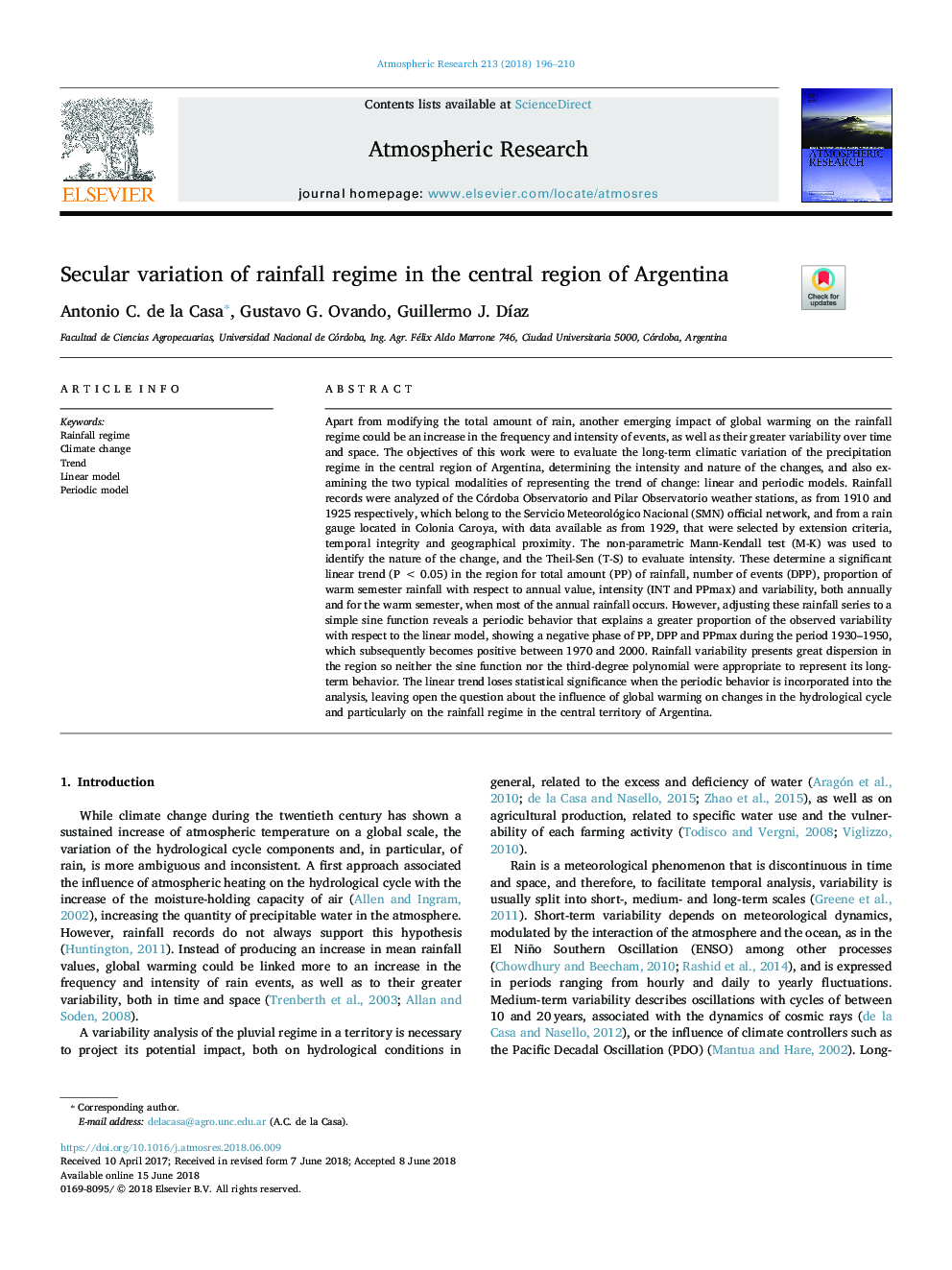| کد مقاله | کد نشریه | سال انتشار | مقاله انگلیسی | نسخه تمام متن |
|---|---|---|---|---|
| 8864493 | 1620468 | 2018 | 15 صفحه PDF | دانلود رایگان |
عنوان انگلیسی مقاله ISI
Secular variation of rainfall regime in the central region of Argentina
ترجمه فارسی عنوان
تغییرات سکولار رژیم باران در منطقه مرکزی آرژانتین
دانلود مقاله + سفارش ترجمه
دانلود مقاله ISI انگلیسی
رایگان برای ایرانیان
کلمات کلیدی
رژیم بارش تغییر آب و هوا، روند، مدل خطی، مدل دوره ای
موضوعات مرتبط
مهندسی و علوم پایه
علوم زمین و سیارات
علم هواشناسی
چکیده انگلیسی
Apart from modifying the total amount of rain, another emerging impact of global warming on the rainfall regime could be an increase in the frequency and intensity of events, as well as their greater variability over time and space. The objectives of this work were to evaluate the long-term climatic variation of the precipitation regime in the central region of Argentina, determining the intensity and nature of the changes, and also examining the two typical modalities of representing the trend of change: linear and periodic models. Rainfall records were analyzed of the Córdoba Observatorio and Pilar Observatorio weather stations, as from 1910 and 1925 respectively, which belong to the Servicio Meteorológico Nacional (SMN) official network, and from a rain gauge located in Colonia Caroya, with data available as from 1929, that were selected by extension criteria, temporal integrity and geographical proximity. The non-parametric Mann-Kendall test (M-K) was used to identify the nature of the change, and the Theil-Sen (T-S) to evaluate intensity. These determine a significant linear trend (Pâ¯<â¯0.05) in the region for total amount (PP) of rainfall, number of events (DPP), proportion of warm semester rainfall with respect to annual value, intensity (INT and PPmax) and variability, both annually and for the warm semester, when most of the annual rainfall occurs. However, adjusting these rainfall series to a simple sine function reveals a periodic behavior that explains a greater proportion of the observed variability with respect to the linear model, showing a negative phase of PP, DPP and PPmax during the period 1930-1950, which subsequently becomes positive between 1970 and 2000. Rainfall variability presents great dispersion in the region so neither the sine function nor the third-degree polynomial were appropriate to represent its long-term behavior. The linear trend loses statistical significance when the periodic behavior is incorporated into the analysis, leaving open the question about the influence of global warming on changes in the hydrological cycle and particularly on the rainfall regime in the central territory of Argentina.
ناشر
Database: Elsevier - ScienceDirect (ساینس دایرکت)
Journal: Atmospheric Research - Volume 213, 15 November 2018, Pages 196-210
Journal: Atmospheric Research - Volume 213, 15 November 2018, Pages 196-210
نویسندگان
Antonio C. de la Casa, Gustavo G. Ovando, Guillermo J. DÃaz,
